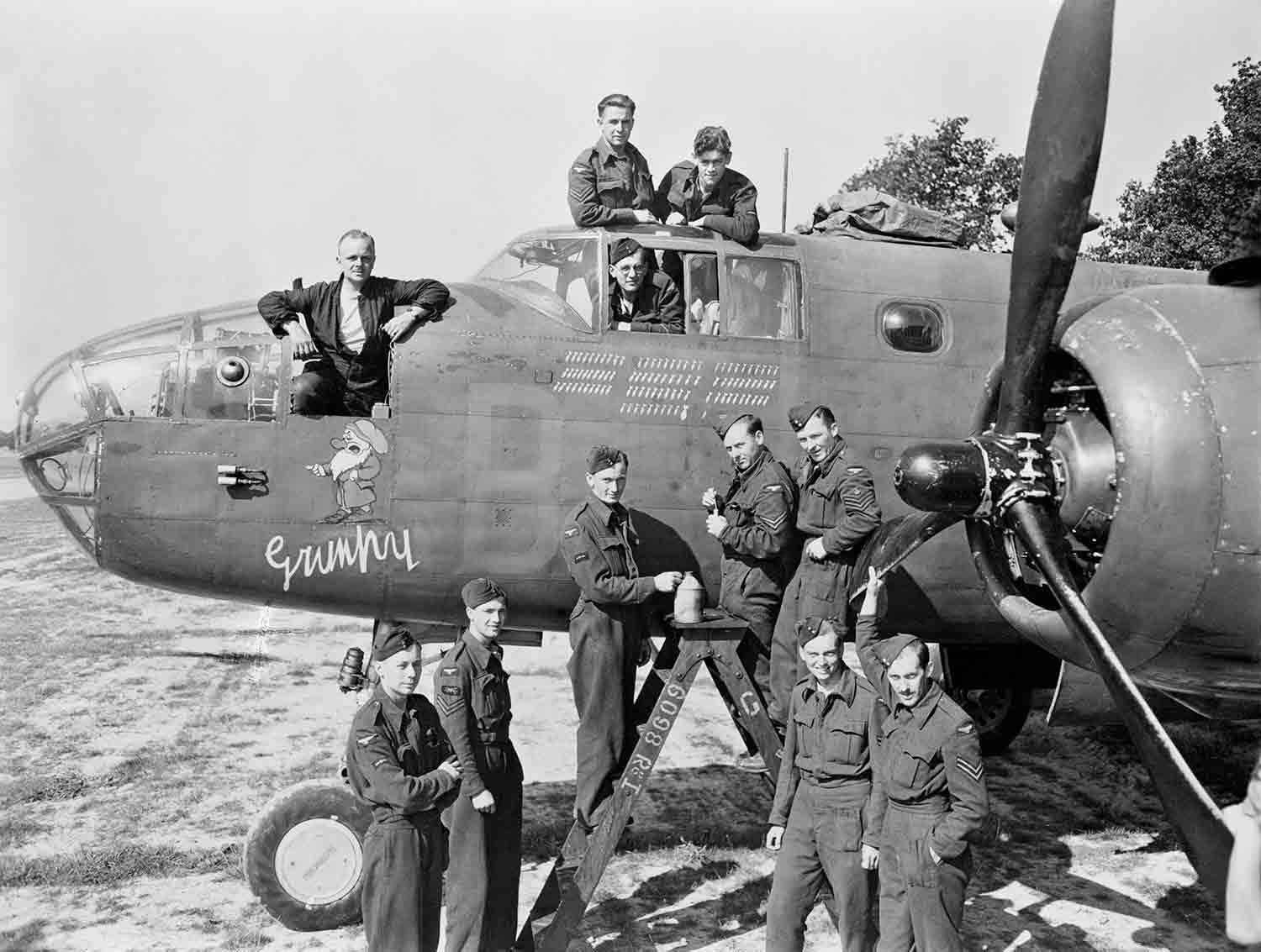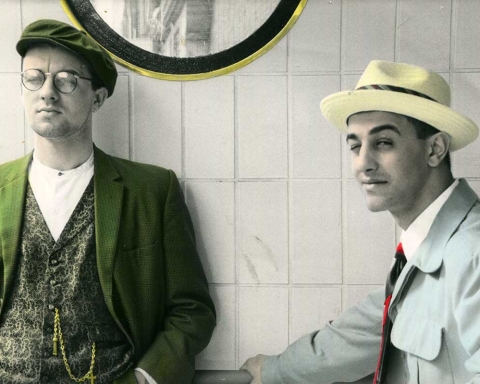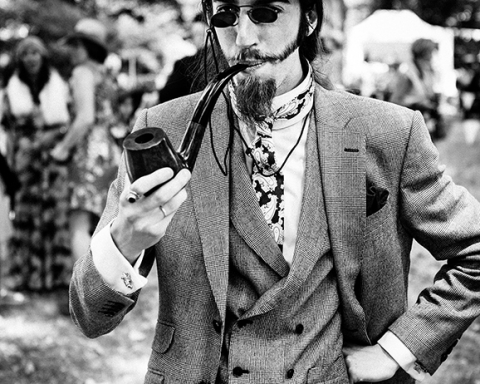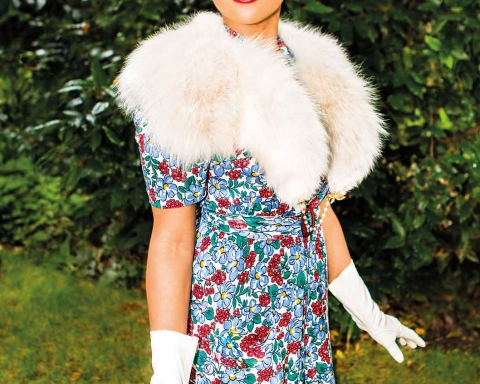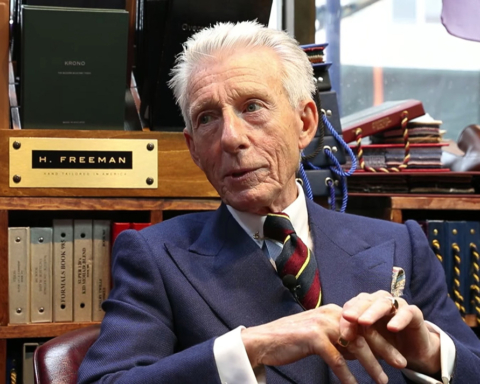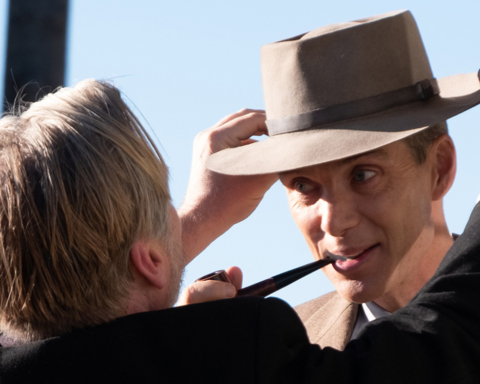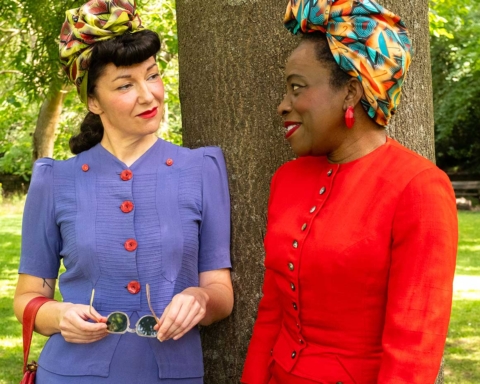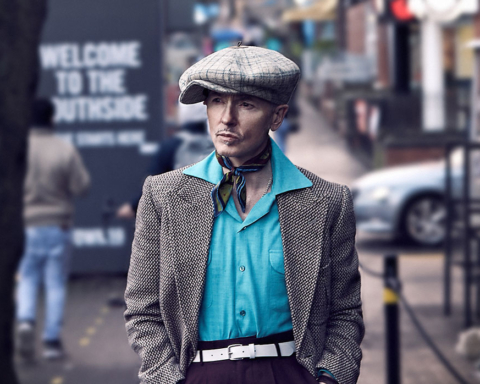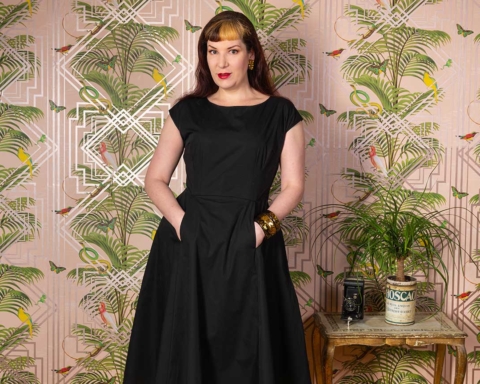Think of clothing in World War II and chances are you’ll imagine either RAF officers on bombing raids or victory-rolled Land Girls in breeches and beetroot lipstick. You probably won’t think of men’s fashion. There’s a good reason for that.

A new exhibition at the Imperial War Museum, Fashion on the Ration, 1940s Street Style, describes how the Second World War affected the way ordinary people looked and dressed. Men play a typically back-seat role in the displays, but a closer look reveals a low-key but determined presence.
We all know about women’s wartime privations – gravy browning legs, boot-polish mascara and parachute silk underwear. But it could be argued men were greater victims. Women might have given up their lipstick but men – men lost their turn-ups…
The Great Turn-Up Turn-Off was one of the biggest gripes of war-ravaged Britain. Butter to bootlaces, everything was rationed, but what really upset 1940s Man was losing an inch and a half of fabric off the bottom of his trousers.

When everything was in flux, taking care with the way you looked was to stay in control, to prove morale was undimmed. The directive to keep up appearances came from on high. Sharp dressers abounded in government, from the debonair Secretary of State, Anthony Eden, to King George VI himself. George may not have been as flashy as his ex-king brother Edward but his quiet elegance suited the times’ muted tones. At the outbreak of war he resolved to always be seen in uniform. Even Buckingham Palace flunkeys wore battledress.
At first clothes just became more expensive and less available. Admittedly men’s wardrobes were hardly of the peacock variety in the first place; the fanciest item would have been a fair-isle sweater for The Younger Man. Leisurewear was a sports jacket and grey flannels. Sportswear was tennis shoes – and for sport. If you wore bright colours or – heavens – suede shoes you were probably one of those lounge-lizard types. Anthony Eden was regarded with particular suspicion; he wore cologne.

The first sartorial casualty of war was evening dress. Almost overnight it became unpatriotic to turn up to the theatre in white – or even black – tie, heralding the sad lack in occasion wear we see today.
Life was getting difficult though. Supplies were so poor even Lord Beaverbrook was reduced to wearing white tennis socks with daywear. In 1941 rationing, brought in a year earlier for food, was extended to clothing. Sir Winston Churchill, famously fastidious in his own dress, held out against it, horrified at the idea of people walking the streets in “rags and tatters”.


Churchill was an early adopter of the Siren Suit – what many now call ‘onesie’ but which was, frankly, more like an upmarket boiler suit than the hideous pyjamas grown men seem to think acceptable for outdoor wear these days. Created with last-minute sprints to the bomb shelter in mind, siren suits were practical but not generally good looking. Churchill had his tailored by Turnbull & Asser. For day, pinstripe; for evening wear (he, at least, kept standards high) siren suits fashioned in dark red and bottle green velvet. Please remember, this was The War. There is no necessity to emulate such desperate measures now.
When ‘Make Do and Mend’ arrived once again men were at the sharp end. Not only did they have to put up with re-knitted cardigans and ghastly ‘jerkins’ made from old blankets but if their backs were turned for one minute (give or take a month while away on active service) their wives would turn their best pinstripe suits into natty skirt-and-jacket ensembles and their favourite trilbies into bedroom slippers. The government even supplied the pattern.

CC41, or Utility Wear, should have levelled things out, allowing everyone to purchase the same, good quality clothing at regulated prices, but equality came at a harsh price. Women’s clothes had time and effort spent on their design. Men weren’t so lucky. Single-breasted suits with a maximum of three pockets and three buttons, virtually no elastic because the girls had commandeered it for their knickers, no zips, no buttons on the cuffs, no patch pockets, no chain-hole in the waistcoat. Socks of maximum 9 ½ inches in length. Skinny, dreary ties. Forget those satin belly-warmers with the naked ladies and geometric designs you see at modern ‘vintage’ events. They were an American conceit, worn only in the movies, by the Yanks and the odd spiv. Men’s shirts were shorter; double cuffs were banned. Trousers were allowed at most a 19” circumference at the bottom, and in that final, cruel blow, turn ups were banished. The President of the Board of Trade was an overnight pariah.
There were work-arounds, of course, until they were discovered. Men started buying longer trousers and having the extra turned up. Women would buy large skeins of un-rationed darning thread and knit their husbands scratchy jumpers. I can only assume a collective sigh of relief when that particular loophole was closed.

Men in the services fared better. The navy had always looked smart and even lower-ranked RAF airmen could snare a girl at hangar dances thanks to their beautifully designed uniforms. RAF officers’ uniforms were so envied they were used in recruitment literature. It’s rumoured they were copied by enemy Luftwaffe pilots.

This left the poor old boot-and-belt squaddie. A flabby brown battledress four sizes too large in itchy government-issue serge, massive, foot-bleeder boots and a haversack. No wonder many soldiers nipped to the village tailor to get it altered so at least it didn’t drag on the ground. Some spent proper money to have the entire kit refashioned. Towards the end of the war they began to unbutton the top of their battledress to show off shirts they’d purchased themselves with real collars, instead of the standard granddad variety. They used any excuse to get hold of flying jackets and in hotter regions donned suede desert boots, the original brothel creepers.
Nevertheless the appeal of a man in uniform, any uniform, lingered. Civilian outfits – Air Raid Patrol, Auxiliary Fire Service, Home Guard – were worn with pride, but those RAF chaps remained the real head-turners. That is, until the GIs arrived with their figure hugging, tailored garments, their chewing gum, chocolate and nylons.

Towards the end of the war, manufacturers who had supplied service wear switched smoothly to demobilisation apparel. The biggest demob supplier was high-street giant Burtons. The Full Monty (which, depending on which source you’re looking at, refers to either Field Marshall Montgomery’s breakfast or Sir Montague Burton’s suits) consisted of suit, mackintosh, overcoat, trilby hat, shirt, tie and socks, with everything wrapped up in a big, sealed box.
Propaganda shots show rugged ex-servicemen strolling down rows of well-fashioned clothing at Olympia Exhibition Halls, selecting excellent items at their leisure. Signs recommend they take time to choose the perfect outfit. In practice someone would bark “Size?” at the next ex-serviceman in the queue, then dump a load of stuff into the poor man’s arms. Nevertheless, it was stout, durable and, at last, double-breasted. The wholesale cost of a demob suit was £12 – around about £450 now – given free to each ex-serviceman. Spivs would hang around outside offering men £20 for the box they emerged with. After a while some got wise and came out carrying boxes repacked with newspaper, happily exchanging them for the spivs’ cash.

It’s worth taking time to listen to stories such as that whilst visiting the IWM exhibition. Just as British army uniform was never as, well, uniform as it is in the movies, propaganda and newspaper directives took a different line to real-life. Headset-tales beside exhibits show an often very different perspective to the image you first see. It’s the detail that takes Fashion on the Ration to another level.
Fashion on the Ration 1940s Street Style – at the Imperial War Museum in London until August 31, 2015, open daily from 10am – 6pm

